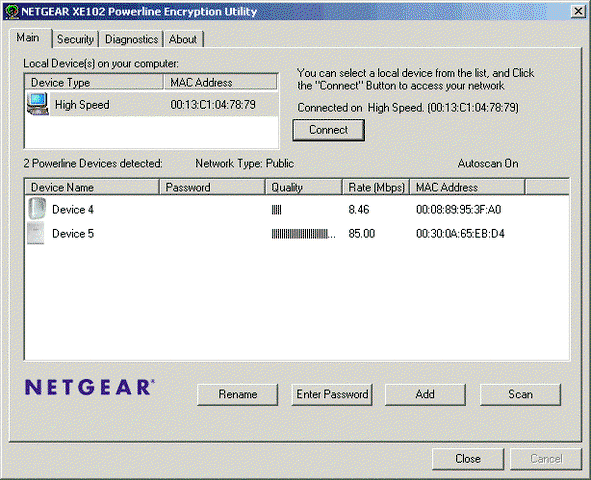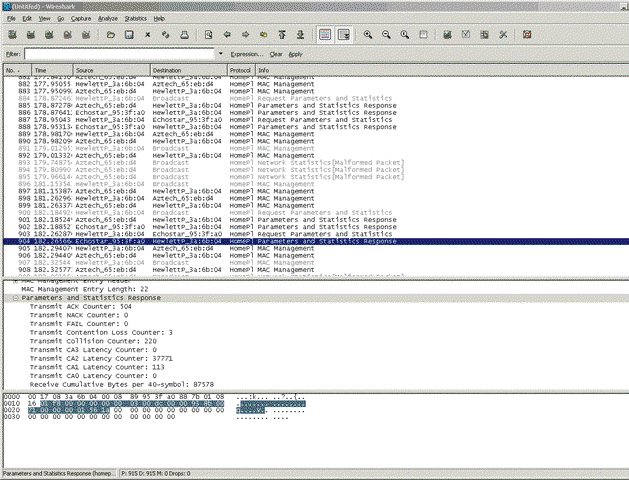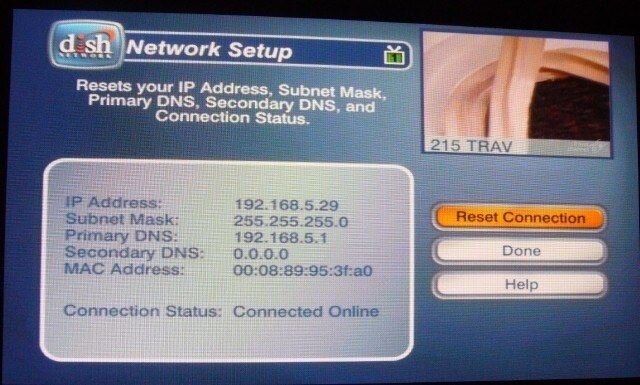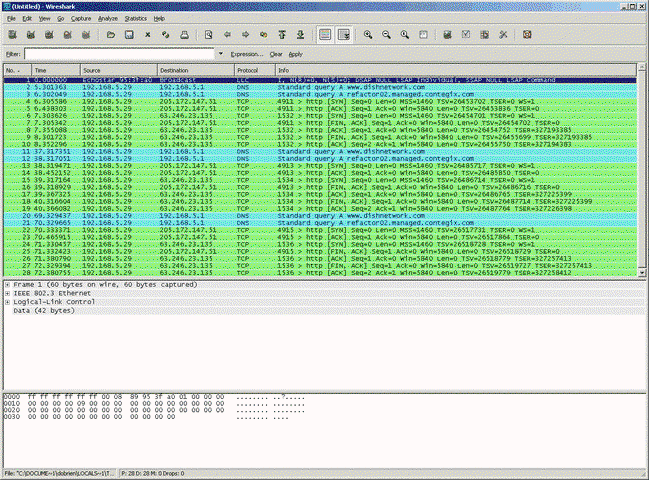I started working for a BPL technology company back in December, and so all year long I have been working HomePlug devices. I found them remarkably useful and quite up to the task of high speed internetworking within a household. When the 622 Ethernet plans were being discussed, I had thought about writing a primer how to use HomePlug devices (We call those Power Line modems "PLIDs" for Power Line interface devices) to connect your 622 to the router in your house for internet connectivity. I figured that you would have a PLID at your 622, another by your router, and this would save you from having to run a Cat5 cable.
Sure Wi-Fi adapters exist and can provide connectivity. But they use a shared spectrum with Cordless Phones, Microwave Ovens, and most importantly your laptops. The constant stream of 802.11 traffic that your 622 might generate could leave most other apps starved for bandwidth. Plus if you are in a townhouse, condo/apt, or even close houses, you share that spectrum with your neighbors too. I have aways found that when I want to transfer large amounts of data between my laptop and other hosts on my home net, that its better to hook up the 100Mbps cat5e than to wait on Wifi to get the job done. Sure I'm supposed to be gettting 54Mbps, But its never even close to 50% of the speed to my 100Mbps hardwired connection.
So I was going to write up a nice little "how to do" about configuring the HomePlug PLIDs for the home network (its about as simple as giving two or more PLIDS the same password so they can talk to each other). But I was completely shocked to see that the 622 has the HomePlug chip built right in. I had suspected that it was possible when DishComm was made available which allowed the receivers to talk to each other to share a phone line. But I kinda dismissed that as just a "phone jack" feature. Surely Dish hadn't had to foresight to actually put a high speed BPL chip into their receivers.
This is another Brilliant move on Dish Network's part. This allows their VIP receivers to use the existing household electrical wiring for networking. No need for the installers to run Cat5e around the house, no worries about bad 802.11 characteristics. This really was the right call. I would not be surprised to see installers start to carry around those $30 PLIDs with their standard installation when Dish starts to more fully utilize the internet for its services. And to think that Verizon and at&t are using MOCA.
There is the drawback; Battery backups and Surge protectors which can block out the frequencies used to communicate over the power lines. The Dish Receivers and the PLIDs will usually have to be plugged directly into an outlet. I will however state that we do use regular old "power strips" here all the time for PLIDs. I kinda use the power strips as a "HUB" for the PLIDs. Cheap power strips seem to have little or no impact on throughput for these HomePlug PLIDs.
The one thing that I'm not sure how the 622 is going to handle is the provisioning of the PLID. On the tech chat last night, they said that you just plug the PLID in by your router and the 622 will automatically configure it for use. Now that sounds alarms in my head. Because that would mean that the 622 has some way of setting the password (actually its called the "NEK" Network encryption key) on the PLID, or setting the 622 to match the one already in use by the PLID. Now you can remotely change the NEK on a homeplug device, you need to know that device's "DEK" device encryption key (think of it as a password unique to each individual HomePlug device). My fear is that if you have PLIDs already functioning in your house, will the 622 start to reconfigure them to its use and possibly screw up your network? Upon further reflection the default NEK for EKS 1 on a HomePlug device is usually "HomePlug". Perhaps Dish is counting on that being the default value on any PLID purchased. That would allow them to communicate out of the box.
I will have to investigate this further.
Update: Upon further investigation (see a post below) I have confirmed that the 622 is indeed using the default NEK of "HomePlug" for EKS 1. This way Dish remains compatible with existing HomePlug devices and poses no threat any existing setup. But this is a security hole since your LAN is unsecured at any power outlet inside (or outside your home).
The Home Networking Installation Guide from Dish can be found here.
I checked it out, but it does not see to answer my questions about how exactly the 622 gets to use the same NEK as the PLID.
Just some FYI Tidbits:
HomePlug 1.0 = 14Mbps Compatible with 622
HomePlug 1.1 = 85Mbps Compatible with 622
HomePlug AV = 200 Mbps Known to not be compatible with 622 (or any other HomePlug 1.x devices)
DEK = Device Encryption Key - A password that is unique to each HomePlug 1.x device. Its usually printed on a label on the PLID along with the MAC address.
EKS = Encryption Key Select - Numeric value from 0 - 8 Devices have 8 keys, EKS0 is reserved. Each key is common to a logical network. (Kinda like a VLAN).
NEK = Network Encryption Key - The encrypt key for a EKS. (an ascii value). There is a NEK for each EKS.
If the NEK on EKS 1 matches between any two or more homeplug devices, then they can communicate to each other. Same thing for any of the other EKSs. If the NEK configured for EKS 3 on homeplug device #1 matches the same NEK for EKS 3 home plug device #2, then they can talk.
Example:
Dish 622 has EKS 1 set with a NEK value of "HomePlug". (standard default on most HomePlug devices)
PLID has its EKS 1 set to a NEK value of "HomePlug".
They should both be able to see each other and communicate. If they do not, then your PLID may have its NEK for EKS 1 set to something other than "HomePlug". Your PLID likey came with a "power line utility" software package. You can use that to set the "network name" (ie NEK) to "HomePlug" which will change the PLIDs EKS1 NEK to "HomePlug" and now the 622 and PLID should be able to communicate.
Clear as mud right?
Useful Info:
Netgear XE102 Users Guide 14Mbps model
Netgear XE103 Users Guide 85Mbps model Note XE104 looks the same as the XE103, but has 4 ethernet ports.
Belkin F5D4070 Power Line adapter a 14Mbps Adapter
Asoka Powerline modem - A 85Mbps PLID.
Intellon - They make the Chipset that is used by most of these HomePlug devices. Good reading info here.
Sure Wi-Fi adapters exist and can provide connectivity. But they use a shared spectrum with Cordless Phones, Microwave Ovens, and most importantly your laptops. The constant stream of 802.11 traffic that your 622 might generate could leave most other apps starved for bandwidth. Plus if you are in a townhouse, condo/apt, or even close houses, you share that spectrum with your neighbors too. I have aways found that when I want to transfer large amounts of data between my laptop and other hosts on my home net, that its better to hook up the 100Mbps cat5e than to wait on Wifi to get the job done. Sure I'm supposed to be gettting 54Mbps, But its never even close to 50% of the speed to my 100Mbps hardwired connection.
So I was going to write up a nice little "how to do" about configuring the HomePlug PLIDs for the home network (its about as simple as giving two or more PLIDS the same password so they can talk to each other). But I was completely shocked to see that the 622 has the HomePlug chip built right in. I had suspected that it was possible when DishComm was made available which allowed the receivers to talk to each other to share a phone line. But I kinda dismissed that as just a "phone jack" feature. Surely Dish hadn't had to foresight to actually put a high speed BPL chip into their receivers.
This is another Brilliant move on Dish Network's part. This allows their VIP receivers to use the existing household electrical wiring for networking. No need for the installers to run Cat5e around the house, no worries about bad 802.11 characteristics. This really was the right call. I would not be surprised to see installers start to carry around those $30 PLIDs with their standard installation when Dish starts to more fully utilize the internet for its services. And to think that Verizon and at&t are using MOCA.
There is the drawback; Battery backups and Surge protectors which can block out the frequencies used to communicate over the power lines. The Dish Receivers and the PLIDs will usually have to be plugged directly into an outlet. I will however state that we do use regular old "power strips" here all the time for PLIDs. I kinda use the power strips as a "HUB" for the PLIDs. Cheap power strips seem to have little or no impact on throughput for these HomePlug PLIDs.
The one thing that I'm not sure how the 622 is going to handle is the provisioning of the PLID. On the tech chat last night, they said that you just plug the PLID in by your router and the 622 will automatically configure it for use. Now that sounds alarms in my head. Because that would mean that the 622 has some way of setting the password (actually its called the "NEK" Network encryption key) on the PLID, or setting the 622 to match the one already in use by the PLID. Now you can remotely change the NEK on a homeplug device, you need to know that device's "DEK" device encryption key (think of it as a password unique to each individual HomePlug device). My fear is that if you have PLIDs already functioning in your house, will the 622 start to reconfigure them to its use and possibly screw up your network? Upon further reflection the default NEK for EKS 1 on a HomePlug device is usually "HomePlug". Perhaps Dish is counting on that being the default value on any PLID purchased. That would allow them to communicate out of the box.
I will have to investigate this further.
Update: Upon further investigation (see a post below) I have confirmed that the 622 is indeed using the default NEK of "HomePlug" for EKS 1. This way Dish remains compatible with existing HomePlug devices and poses no threat any existing setup. But this is a security hole since your LAN is unsecured at any power outlet inside (or outside your home).
The Home Networking Installation Guide from Dish can be found here.
I checked it out, but it does not see to answer my questions about how exactly the 622 gets to use the same NEK as the PLID.
Just some FYI Tidbits:
HomePlug 1.0 = 14Mbps Compatible with 622
HomePlug 1.1 = 85Mbps Compatible with 622
HomePlug AV = 200 Mbps Known to not be compatible with 622 (or any other HomePlug 1.x devices)
DEK = Device Encryption Key - A password that is unique to each HomePlug 1.x device. Its usually printed on a label on the PLID along with the MAC address.
EKS = Encryption Key Select - Numeric value from 0 - 8 Devices have 8 keys, EKS0 is reserved. Each key is common to a logical network. (Kinda like a VLAN).
NEK = Network Encryption Key - The encrypt key for a EKS. (an ascii value). There is a NEK for each EKS.
If the NEK on EKS 1 matches between any two or more homeplug devices, then they can communicate to each other. Same thing for any of the other EKSs. If the NEK configured for EKS 3 on homeplug device #1 matches the same NEK for EKS 3 home plug device #2, then they can talk.
Example:
Dish 622 has EKS 1 set with a NEK value of "HomePlug". (standard default on most HomePlug devices)
PLID has its EKS 1 set to a NEK value of "HomePlug".
They should both be able to see each other and communicate. If they do not, then your PLID may have its NEK for EKS 1 set to something other than "HomePlug". Your PLID likey came with a "power line utility" software package. You can use that to set the "network name" (ie NEK) to "HomePlug" which will change the PLIDs EKS1 NEK to "HomePlug" and now the 622 and PLID should be able to communicate.
Clear as mud right?
Useful Info:
Netgear XE102 Users Guide 14Mbps model
Netgear XE103 Users Guide 85Mbps model Note XE104 looks the same as the XE103, but has 4 ethernet ports.
Belkin F5D4070 Power Line adapter a 14Mbps Adapter
Asoka Powerline modem - A 85Mbps PLID.
Intellon - They make the Chipset that is used by most of these HomePlug devices. Good reading info here.
Last edited:






